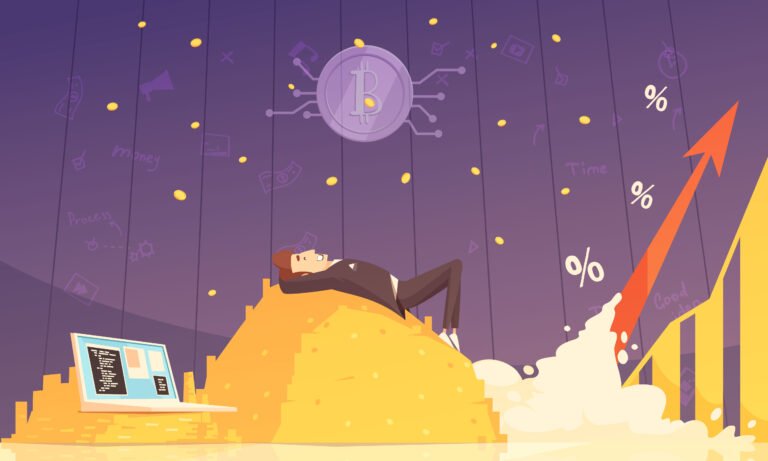11 Crypto Signals That Could Have Saved You From Losses
1. Why Most Crypto Traders Lose Money
The Psychology Behind Emotional Trades
In the world of crypto, the market doesn’t just test your strategy — it tests your emotions. The thrill of green candles and the fear of red ones often override logic. Most new traders don’t lose because of lack of opportunity — they lose because they act emotionally: chasing pumps, panic-selling on dips, or holding losers in denial.
When the market gets volatile, your mindset becomes your worst enemy. Greed pushes you in too late. Fear drags you out too early. And FOMO (Fear of Missing Out) convinces you to break every rule you set for yourself.

Table of Contents
Ignoring Warning Signs = Costly Mistakes
While the market often gives subtle (and not-so-subtle) signals before big moves, many traders ignore them. Either they don’t recognize them, or they’re too caught up in hype or fear to act on them.
From technical indicators to on-chain data and market sentiment shifts — the signs are often there. If you had paid attention to these 11 powerful signals, you could have avoided massive losses — and maybe even turned them into opportunities.
2. What Are Crypto Signals – And Why They Matter
Not Just Buy/Sell Alerts: They’re Strategic Clues
Crypto signals are often misunderstood. Many traders think they’re simply “buy at X” and “sell at Y” messages, but in reality, the best signals are clues — early warnings or confirmations that help you make smarter trading decisions.
A real crypto signal could be a surge in trading volume, a technical pattern forming, a shift in sentiment, or even on-chain activity like whale movements. They don’t guarantee profits — they give you context. The difference between profitable and unprofitable traders? The ability to recognize and act on these clues with discipline.
Manual vs. Automated Signals: What You Need to Know
There are two broad types of signals:
- Manual Signals – Generated by human analysts or traders based on market patterns, technical indicators, and experience. Often found in Telegram groups, newsletters, or Discord servers.
- Automated Signals – Triggered by algorithms that scan the market 24/7, looking for specific setups or anomalies. These are often used in trading bots and dashboards.
Both have their strengths. Manual signals offer judgment and nuance; automated ones offer speed and objectivity. The best traders learn to use both — and verify with their own analysis before jumping in.
3. Signal #1: Sudden Spike in Trading Volume
Volume Precedes Price – Most of the Time
One of the most overlooked but powerful signals is a sudden surge in trading volume. In crypto, where price manipulation and hype are common, volume is often the truth-teller. A sharp increase in volume usually means something big is about to happen — either a breakout or a breakdown.
Why? Because volume reflects real market interest. When buyers or sellers come in aggressively, it often signals institutional entry, whale positioning, or insider anticipation of news. Price can be faked for a while — but volume is harder to disguise.
How to Read Volume Surges Before a Pump or Dump
Here’s how to use volume as a preemptive signal:
- Unusual Volume + Sideways Price: This often indicates accumulation or distribution. Smart money is positioning quietly before a big move.
- Breakout with High Volume: More reliable than low-volume breakouts. It shows the move has real momentum.
- Volume Spikes on No News: Be cautious. If price pumps and volume explodes with no news or catalyst, it could be a trap (pump-and-dump).
- Compare to 20-Day Average: Many platforms show average volume over time — if today’s volume is 2x–3x the average, it’s worth watching closely.
Pro tip: Use tools like TradingView or CryptoQuant to set volume spike alerts, so you never miss an early move again.
4. Signal #2: Bearish Divergence on RSI
When Price Goes Up, But RSI Drops
One of the most reliable warning signs in crypto trading is a bearish divergence on the Relative Strength Index (RSI). It happens when the price makes higher highs, but the RSI makes lower highs. In simple terms, the asset is rising — but the momentum behind the move is weakening.
This disconnect often signals that buyers are losing steam, and a reversal or sharp correction may be coming. It’s a quiet, early alert — and most traders miss it until it’s too late.
Classic Divergence Patterns That Predict Reversals
Here’s how to recognize and use bearish RSI divergence:
- Spotting the Pattern: Use the 14-day RSI. If the price hits a new high but RSI fails to exceed its previous high — red flag.
- Confirm With Volume: If volume also drops while price climbs, the signal becomes even stronger.
- Look for Double Top Formations: Divergence often accompanies bearish chart patterns like double tops or rising wedges.
- Use in Confluence: Pair with other indicators (MACD, trendline breaks) for confirmation.
RSI divergence doesn’t always mean an immediate crash — but it’s usually a heads-up to tighten stops or take partial profits.
5. Signal #3: Whale Wallet Movements
Tracking Big Players Using On-Chain Data
In crypto, whales move markets. These large holders — institutions, early adopters, or coordinated groups — can trigger volatility with just a few wallet transactions. Fortunately, the blockchain is transparent. You can track whale behavior in real-time, if you know where to look.
Whale signals often come before major price moves. If whales are moving large amounts to exchanges, they may be preparing to sell. If they’re withdrawing large sums, it could mean accumulation.
Why Large Transfers Often Signal Volatility Ahead
Here’s how to read whale wallet activity:
- Exchange Inflows: If large amounts of BTC, ETH, or stablecoins are sent to exchanges, expect potential sell pressure.
- Exchange Outflows: Big withdrawals from exchanges to private wallets often signal long-term holding or accumulation.
- Smart Money Wallet Tags: Platforms like Whale Alert, Lookonchain, or Nansen tag known whale and institutional wallets.
- Follow the Stablecoins: USDT or USDC inflows to exchanges can indicate buying intent before a rally.
Whales don’t announce their trades — but their wallets do. Learn to follow their footprints, and you’ll often be two steps ahead of the crowd.
6. Signal #4: Decline in Social Media Sentiment
Reddit, Twitter, Telegram – Digital Crowd Fear Matters
In crypto, social media is the heartbeat of the market. Hype builds on Twitter. Panic spreads in Telegram. And Reddit threads often signal retail sentiment shifts before the charts reflect them. A sudden drop in sentiment, especially during a price rally, can be a warning that confidence is fading — and a reversal may be near.
Even if the chart still looks bullish, negative chatter or fading enthusiasm can erode momentum quickly, especially in retail-driven markets.
How Sentiment Analysis Tools Can Warn You Early
Here’s how to turn online noise into valuable signal:
- Track Keyword Trends: Use tools like LunarCrush, Santiment, or Talkwalker to monitor crypto hashtags, mentions, and engagement.
- Watch for Sentiment Divergence: If price is rising but sentiment scores are dropping — it’s often a sign of weak conviction or insider sell-offs.
- Monitor Influencer Tone Shifts: When major accounts start going neutral or negative, it’s often a cue that smart money is exiting.
- Compare Sentiment vs. Price Action: Bullish sentiment rising too fast? Watch for a local top. Bearish sentiment during sideways action? Could signal bottoming.
Sentiment alone isn’t a trading plan — but as an early warning system, it’s incredibly effective when paired with price action or volume clues.
7. Signal #5: Sharp Drop in Open Interest
Futures Market Exit = Incoming Price Dip
Open Interest (OI) measures the total number of active futures contracts — long and short — in the market. When OI drops sharply, it means traders are exiting positions en masse. This often follows or precedes a sharp move and can act as a clue that volatility or a correction is imminent.
Many traders only focus on price, but OI gives insight into the conviction behind the move. A rising price with falling OI? Be careful — it could be a short squeeze or a false breakout.
Spotting Liquidation Cascades Before They Begin
Here’s how to use OI data to your advantage:
- OI + Price Up = Bullish Strength (usually)
But if OI drops while price rises, it could mean a squeeze or exit pump. - OI Drop + Price Crash = Capitulation
When price tanks and OI collapses, many traders have been liquidated or stopped out. This often signals a short-term bottom. - Watch Key Support Zones with High OI
If price nears a support level with unusually high open interest, a break could trigger a liquidation cascade — sharp, fast drop. - Tools to Track: Use Coinglass, CryptoQuant, or Skew to monitor real-time OI changes across major exchanges.
Smart traders watch OI the same way pilots watch weather radars — not to predict the future perfectly, but to spot incoming turbulence.
8. Signal #6: Funding Rate Flips Negative
What a Negative Funding Rate Means for You
In crypto futures trading, the funding rate is the periodic fee paid between long and short positions. When the funding rate is positive, longs are paying shorts — indicating that more traders are betting on price going up. But when the funding rate turns negative, it means shorts are paying longs, and bearish sentiment dominates.
Ironically, this extreme bearishness can signal a short-term bottom. Why? Because when too many traders are short, the market often does the opposite — triggering a short squeeze that forces shorts to cover their positions, pushing the price upward fast.
Why It Can Indicate Short-Term Bottoms or Tops
Here’s how to interpret funding rate shifts:
- Negative Funding = Oversold Risk
If funding is deeply negative, it often means fear is peaking. A bounce or short squeeze could be close. - Positive Funding = FOMO Risk
If everyone’s going long and funding spikes, it could be a sign the rally is overheated — expect a correction or liquidation event. - Watch the Rate in Context
A slight negative funding rate isn’t a signal on its own — but repeated negative funding during consolidation is often a bullish setup. - Track Across Exchanges
Use tools like Coinglass or Binance Futures Dashboard to compare funding rates across top platforms.
Funding rate is a great contrarian indicator — when used wisely, it can help you fade the crowd and front-run reversals.
9. Signal #7: Key Support Levels Breaking
Support Isn’t Just a Line – It’s Market Psychology
Support levels are more than just technical zones — they represent collective belief. When price repeatedly bounces from a certain level, it forms a psychological anchor for buyers. But when that level breaks, it often triggers panic selling, stop-loss hits, and rapid downside.
Watching for support breaks is one of the most basic yet powerful signals to prevent losses — especially if you’re holding an altcoin during Bitcoin volatility.
How to Use Support/Resistance in Real Trades
Use this framework for support/resistance trading:
- Identify Strong Levels: Look for areas with multiple touches, high volume, or fib retracement zones.
- Confirm Breaks with Volume: A support level breaking on high volume = strong bearish confirmation.
- Beware of Fakeouts: Use the 4H or daily candle close to confirm a true breakdown, rather than reacting to wicks.
- Turn Support into Resistance: Once support is broken, the same level often becomes resistance — a chance to short or exit on retests.
Pro tip: Set alerts slightly above/below key support zones — this gives you a head start before the rest of the market reacts.
Support levels don’t hold forever. When they crack, acting fast can save your capital — or even flip the situation into profit.
10. Signal #8: Fear & Greed Index Turns Extreme
Emotional Extremes Often Precede Trend Reversals
In crypto, markets are driven by emotions as much as data. The Fear & Greed Index condenses social, technical, and market metrics into one number — gauging whether traders are too fearful or too greedy. And just like in life, extremes are rarely sustainable.
When the index flashes extreme greed, it often signals overconfidence — and potential for a pullback. On the flip side, extreme fear tends to occur near bottoms, when weak hands have capitulated and smart money starts buying.
How to Use the Index as a Contrarian Tool
Here’s how to turn crowd psychology into smart trading moves:
- Extreme Greed (80–100)
Signals overbought conditions. Consider taking profits, tightening stops, or avoiding new longs. - Extreme Fear (0–20)
Indicates potential bottoms. Great time to DCA (Dollar Cost Average) or look for bullish reversal patterns. - Use It With Price Action
The index alone isn’t a signal — but when it aligns with support levels, RSI divergence, or volume shifts, it’s a powerful contrarian tool. - Daily Tracking Tools: Use platforms like Alternative.me, LookIntoBitcoin, or widgets on CoinMarketCap to monitor the index.
Smart traders don’t chase the crowd — they anticipate it. When everyone’s euphoric, it may be time to exit. When everyone’s panicking, it may be your signal to enter.
11. Signal #9: Miner Outflows Increase
When Miners Sell, Market Usually Follows
Miners are a unique class of crypto holders — they earn coins regularly and tend to sell them to cover operational costs. So when miner outflows spike, it often signals imminent sell pressure, especially in Bitcoin and proof-of-work coins.
If large amounts of coins are suddenly being moved from miner wallets to exchanges, it’s usually not a bullish sign. It’s one of the most underused yet predictive on-chain indicators.
Tools to Track Miner Activity Before It Hits the Charts
Here’s how to monitor and interpret miner flows:
- Watch Exchange Transfers
Miner wallets sending coins to exchanges? This often precedes market dips. - Use On-Chain Dashboards:
- CryptoQuant: Offers real-time “Miner to Exchange” flow charts.
- Glassnode: Tracks miner balances and movement trends.
- IntoTheBlock: Good for on-chain insights, including large holder behavior.
- Combine With Price Action
If price is already weak and miner selling increases, a larger correction may follow. - Look at Historical Spikes
Past major corrections often correlate with increased miner outflows — use those patterns to stay ahead.
Miners are smart — they tend to sell before the crowd catches on. Watching their behavior gives you a front-row seat to market pressure before it shows up in candles.
12. Signal #10: Stablecoin Inflows to Exchanges
Big USDT/USDC Deposits = Incoming Buying Power
Stablecoins like USDT and USDC represent parked capital — dry powder waiting to be deployed. So when large amounts of stablecoins are suddenly deposited onto exchanges, it often means buyers are preparing to enter the market.
Unlike BTC or ETH inflows (which can suggest selling pressure), stablecoin inflows signal demand. It’s like watching liquidity get loaded into a chamber — the shot usually follows soon after.
How to Spot Bullish Liquidity Signals
Here’s how to interpret this under-the-radar signal:
- Track Stablecoin Exchange Wallets
Look for sudden spikes in USDT/USDC balances on Binance, Coinbase, and other major exchanges. Use tools like CryptoQuant, Glassnode, or Whale Alert. - Pair With Price Action
Stablecoin inflows + price consolidation = potential breakout. It shows buyers are preparing behind the scenes. - Monitor Netflows
Stablecoins flowing in and native tokens flowing out? That’s a strong bullish divergence. - Follow the Smart Money
Stablecoin movements from whale wallets to exchanges usually signal that big players are preparing to buy dips or front-run rallies.
When you see USDT rushing to exchanges during a downtrend, don’t panic — it might just be the liquidity that fuels the rebound.
13. Signal #11: Developer Activity Suddenly Drops
Abandoned Codebases = Long-Term Red Flag
Behind every great crypto project is a team of developers. Their activity — updates, commits, forks, bug fixes — reflects the project’s health, innovation, and long-term viability. So when developer activity drops sharply, it’s a red flag that the project may be stagnating, losing vision, or even heading for a slow death.
This signal doesn’t show up in price charts — but it often explains why price fails to recover even during market-wide rallies.
Platforms Like Santiment Can Track Dev Health
Here’s how to monitor this critical but underused signal:
- Use GitHub Commit Trackers
Sites like Santiment, CryptoMiso, and CoinCheckup rank coins based on active development. Fewer commits = less innovation = more risk. - Look for Trends, Not Just Dips
A week of inactivity isn’t a big deal — but a steady decline over weeks or months can be telling. - Compare With Roadmaps
Promised upgrades with no dev activity? 🚩 That’s a credibility issue. - Watch Community Chatter
Active dev teams usually engage in forums, AMA sessions, and public sprint updates. Silence is rarely bullish.
Strong fundamentals require active development. If the devs disappear, the price often follows — eventually.
Conclusion: Let the Market Whisper — And Listen Closely
Crypto doesn’t crash or pump without warning — the signs are often there. You just need to know where to look. From on-chain activity and sentiment shifts to volume spikes and technical divergences, these 11 signals can help you avoid painful losses and catch smart entries.
You don’t need to be a pro trader or code a bot. You just need to be data-aware, emotionally disciplined, and alert to early signals that others miss.
Trading is a game of probabilities, not certainties. But every signal you learn to recognize increases your edge — and that edge is how you survive (and thrive) in volatile markets.
✅ Quick Takeaways: 11 Crypto Signals That Could Save You
| 🚨 Signal | 💡 Why It Matters |
| 1. Volume Spikes | Early clue to pump/dump action |
| 2. RSI Divergence | Reveals weakening momentum |
| 3. Whale Movements | Smart money signals market shifts |
| 4. Social Sentiment Drops | Crowd fear precedes reversals |
| 5. Open Interest Drops | Shows futures market exits |
| 6. Negative Funding Rate | Contrarian bottom signal |
| 7. Support Levels Breaking | Panic selling often follows |
| 8. Fear & Greed Extremes | Great contrarian indicator |
| 9. Miner Outflows | Early sign of selling pressure |
| 10. Stablecoin Inflows | Liquidity prepping to buy |
| 11. Dev Activity Drops | Long-term value warning |
❓ FAQs: Crypto Signals & Smarter Trading
Q1: Are these signals useful for both short-term and long-term traders?
Yes. Some (like RSI or funding rates) are more short-term, while others (like dev activity or miner flows) are better for long-term trend analysis.
Q2: What tools can I use to track these signals in real time?
- Volume/RSI: TradingView
- Whales & Stablecoin Flows: Whale Alert, CryptoQuant
- Funding Rates & Open Interest: Coinglass, Binance
- Sentiment: Santiment, LunarCrush
- Dev Activity: Santiment, GitHub commit trackers
Q3: Should I act on one signal alone?
No. The best results come from confluence — when 2 or 3 signals align with your strategy or technical analysis.
Q4: Can beginners benefit from these signals?
Absolutely. Understanding these basics helps beginners avoid common traps like buying tops, chasing pumps, or ignoring smart money behavior.







